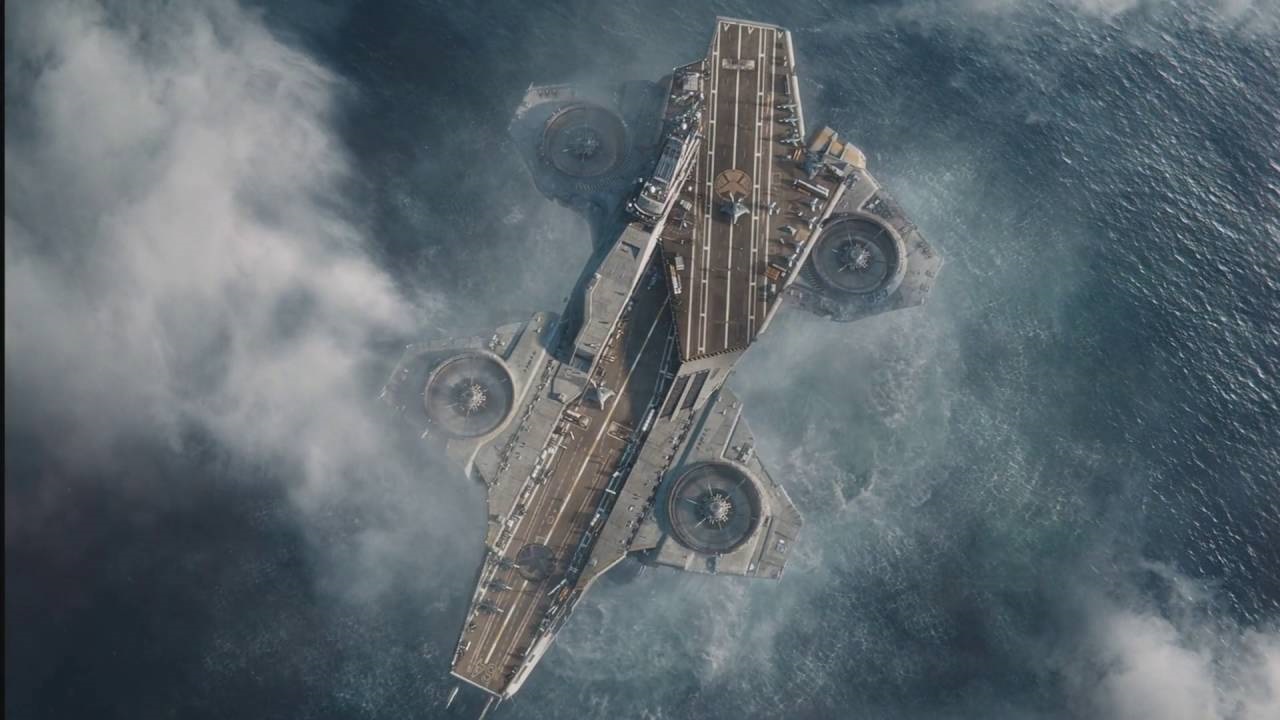Science Impossible: Flying Aircraft Carriers, Submarine Carriers, Jetpacks, and Mechs – The world of science fiction has long suggested the impossible could be possible. Filmmakers and video game designers have only furthered what the world can bring, in part because they’re not limited to the laws of physics or defense budgets. At least, however, when H.G. Welles and Jules Verne conceived some of their grand ideas for what the future might bring, they based them on the science of the day – hence the origins of the very term “science fiction.”
(Subscribe to Our YouTube Channel Here. Check out More 19FortyFive Videos Here)
Fast forward to today, and if CGI (computer-generated images) can create it, chances are you’ll see it on the big screen. The same holds true for video games, where near-future wars include flying tanks, defense shields, and high-energy weapons. Some of these could eventually be seen on future battlefields, while other fan favorites will likely never be employed in the way we see in games in movies.
This includes flying aircraft carriers, swarms of warriors with jetpacks, and of course the “mechs.” It could also be added with a fair share of cynicism that the fact that some of these creations are tailor-made for toys – and this includes actual “play sets” for children, as well as the collectible variety that graces shelves of young-at-heart adults. That is why we’ll continue to debate the merits of these science impossible and improbable war machines.
In other words, what might seem compelling in games and movies simply won’t play in the real world. Here are a few reasons why.
Shooting Down the Flying Aircraft Carriers
This is one that never seems to die, as there are endless discussions on Reddit and other boards about why the military doesn’t try to make flying aircraft carriers. Yet, the U.S. Navy very much did try to make a flying carrier – and its USS Macon and USS Akron were essentially rigid airships (aka “zeppelins”) that could carry a small number of lightweight Curtiss F9C Sparrowhawk biplanes within their airframes. It was far from a successful effort, however, as both airships were involved in accidents.
In April 1933, USS Akron crashed into the Atlantic Ocean off the coast of New Jersey killing 73 out of 76 personnel on board; while two years later USS Macon suffered a less serious crash, which killed two of its 83 crew and passengers. That grounded such efforts.
Today, thanks to the appearance of Helicarrier from the “Marvel Universe” seen in such films as The Avengers, or the retro art deco-inspired mobile airstrip from Sky Captain and the World of Tomorrow, the question of flying carriers often comes up again. But simply put, a slow-moving craft that could be taken out by a ground-based air-defense system will take off like a lead zeppelin. No military is going to invest in what is simply a giant target in the sky in the age of hypersonic missiles and unmanned drones that wouldn’t need to do all that much damage to see this come crashing back to Earth. So until a real-world Tony Stark – calling Elon Musk – wants to step up to fund such a program, flying aircraft carriers will remain grounded.
Deep Sixing the Submarine Carrier
During the Second World War, the Imperial Japanese Navy produced its I-400-class submarines, which were the largest subs ever built until the construction of nuclear ballistic missile submarines in the 1960s. A total of three of a planned 18 boats were built, and each was designed to carry three Aichi M6A Seiran aircraft. The thinking at the time was that the subs could surface, launch their planes and then quickly dive again before they were discovered.
Given the very limited success of the I-400 subs at the end of the war, another debate that won’t end is why the United States Navy doesn’t give submarine carriers another go.
The short answer is that it isn’t as all farfetched – at least not compared to the flying carrier – and any attempt to build a sub-carrier won’t be all that different from today’s fast attack or ballistic submarines. However, no one is going to produce a massive undersea vessel fitted with a hanger for a modern aircraft.
The issue remains how any modern jet fighter could be launched and recovered, and even an F-35B would present issues. Rather, we could, and likely even will see submarines modified to launch unmanned aerial systems (UAS), or drones. The Navy has already tested its Sea Robin, which was able to be launched from its torpedo tubes. Thus, there could be a future of submarine carriers, but not of the kind sci-fi likes to present.
So, anyone hoping for a massive super-submarine carrier that is fitted with a hanger filled with F-35 should stick to the video games. The cost of such a system, not to mention the fact that it takes time and effort to launch and recover the expensive aircraft, would quickly result in a loss of surprise and leave the boat a very big target for a counterattack. Instead, it will be sending in the drones and then diving deep.
Grounding the Jetpack Warriors
Of all of the sci-fi tech that is routinely debated, this one has merit but not in the way many would like to see. The United States Marine Corps and the UK’s Royal Navy have each been conducting tests on how a warfighter could use a jet pack to swarm and board an enemy warship during an assault. In recent years, the Daedalus Mark 1 exoskeleton has been used in tests to allow Royal Marines to make a short transit over water – showcasing how it could be used during hostage rescue operations.
Likewise, jetpacks do present similar opportunities for fire-fighters, medical, and rescue personnel – but no one should expect waves of flying troops in body armor to fight in the sky like Iron Man. Soldiers or Marines certainly couldn’t be fitted in armor as the small engines require the wearer to be lean and travel light. Likewise, the flight time for such jet packs is limited to around just ten minutes.
We may see jetpacks in the future but it won’t be like the comic books or The Mandalorian.
Knocking Down the Mechs
No piece of modern military sci-fi hardware has the love quite like the massive “Mechs” – the giant robotic vehicles that originated in Japanese anime and have since become a staple in board and video games. Seen in such films as Avatar and Pacific Rim, the concept of Mechs was introduced by game designer Jordan Weisman, who created the BattleTech board and roleplaying games of the 1980s.
Weisman actually attempted a grounded approach that saw the steel behemoths powered by electrically-charged artificial muscles that could move the joints via gyroscope stabilizers while the energy required came from an onboard power plant. There was some science reality in the approach, and it is possible that a mechanical exoskeleton could be developed, but it would likely it would resemble the “P-5000 Powered Work Loader” seen in Aliens more than a slow-lumbering walking tank.
Powering such a device is just one factor, and we simply lack batteries large enough at this point. The bigger issue is that it provides no actual benefit to future warfighters. Throughout modern military history, soldiers have sought to get low to the ground, and armies often dig fortifications – hence the trench warfare that was seen during the First World War. Mechs couldn’t easily go prone and are instead massive targets for ground-based artillery and rocket launchers. For a video game like BattleTech that was sort of the point, as the battles played out typically as one-on-one affairs.
Likewise, Mechs couldn’t easily cross rivers, and couldn’t venture into a heavy forest while it would get just as bogged down in urban areas, especially once the rubble piled up. Mechs would be like putting soldiers in supersized medieval armor with the only benefits being a massive amount of firepower. That would do little good if a few well-placed Javelin anti-tank missiles take out a gyroscope or if a concealed pit causes the Mech to tip over. Just remember what those Teddy Bear-like Ewoks did in Return of the Jedi to the Empire’s AT-STs, and that should be enough to knock down any hope that we’ll ever see bipedal fighting machines in the future.
Bonus Photo Essay: Meet the New Ford-Class Aircraft Carrier
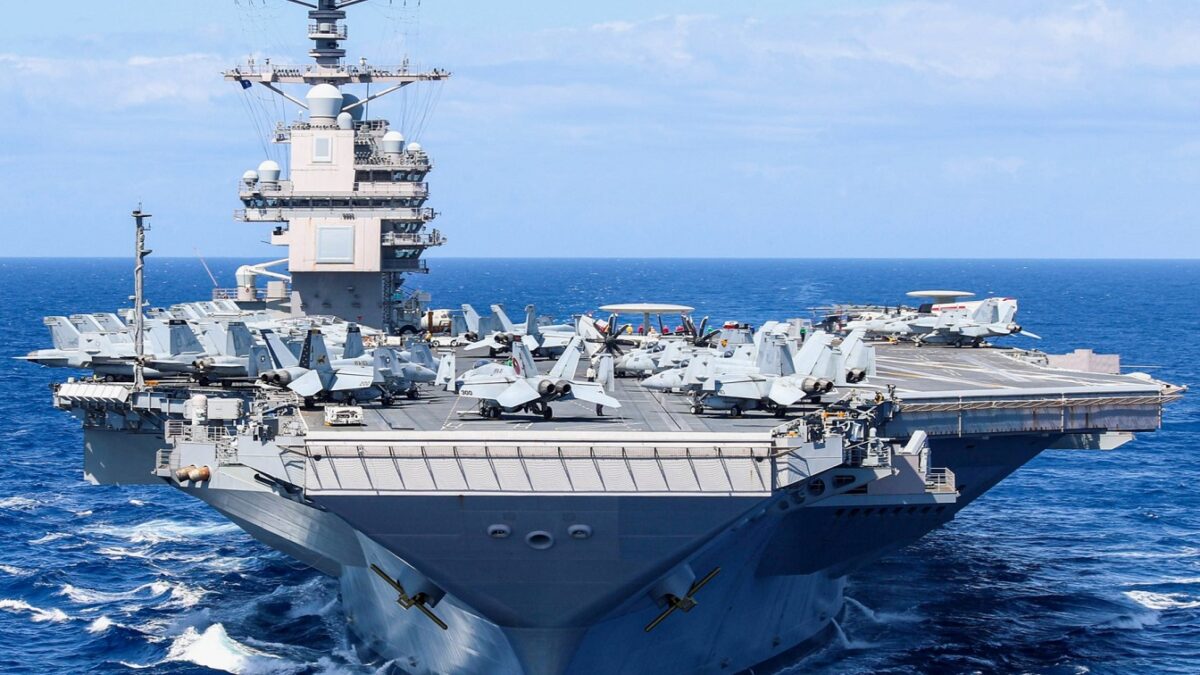
Ford-Class. Ford-Class Aircraft Carrier USS Ford.
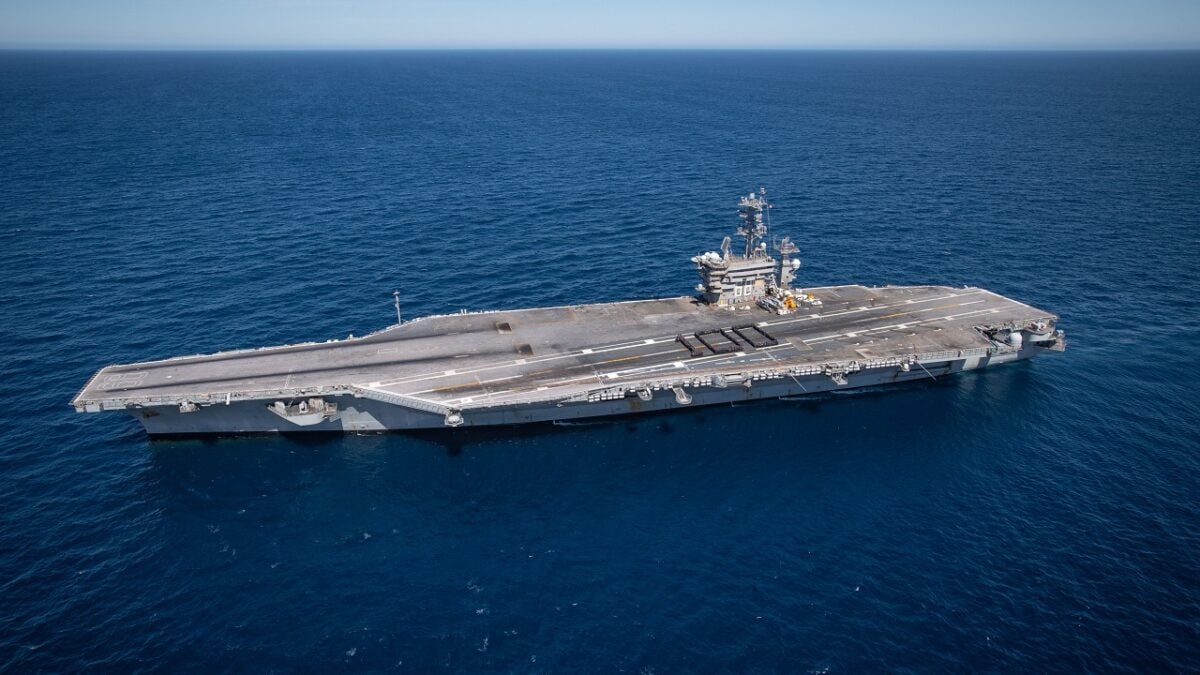
(Mar. 12, 2022) Sailors aboard USS Nimitz (CVN 68) assemble on the flight deck and form a human ‘100’ to commemorate the centennial of the aircraft carrier. On March 20, 1922 the former USS Jupiter (Collier #3) recommissioned as the USS Langley (CV 1), the U. S. Navy’s first aircraft carrier. One hundred years later, Nimitz and Ford-class aircraft carriers are the cornerstone of the Navy’s ability to maintain sea control and project power ashore. Nimitz is the first in its class and the oldest commissioned aircraft carrier afloat., carrying with it a legacy of innovation, evolution and dominance. Nimitz is underway in the 3rd Fleet Area of Operations. (U.S. Navy photo by Mass Communication Specialist 3rd Class Elliot Schaudt)
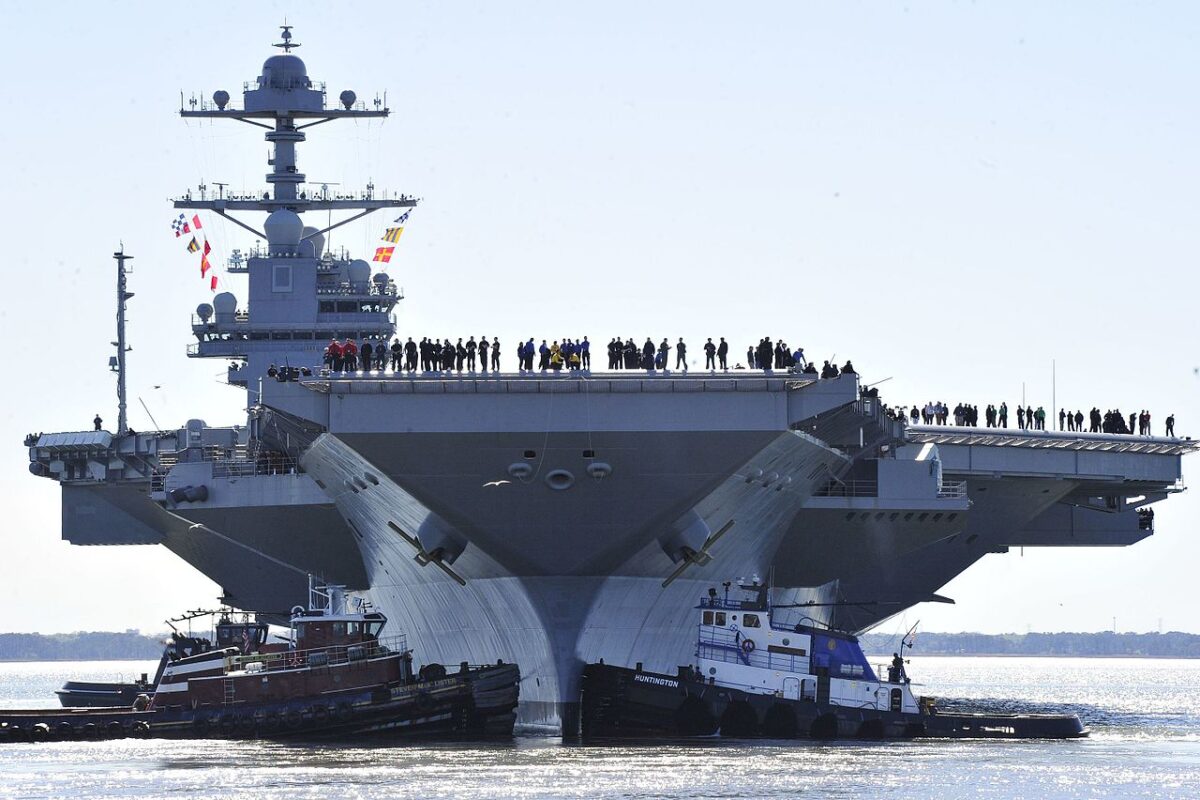
NEWPORT NEWS, Va. (April 8, 2017) – Pre-Commissioning Unit Gerald R. Ford (CVN 78) Sailors man the rails as the ship departs Huntington Ingalls Industries Newport News Shipbuilding for builder’s sea trials off the coast. The first- of-class ship—the first new U.S. aircraft carrier design in 40 years—will spend several days conducting builder’s sea trials, a comprehensive test of many of the ship’s key systems and technologies. (U.S. Navy photo by Chief Mass Communication Specialist Christopher Delano).
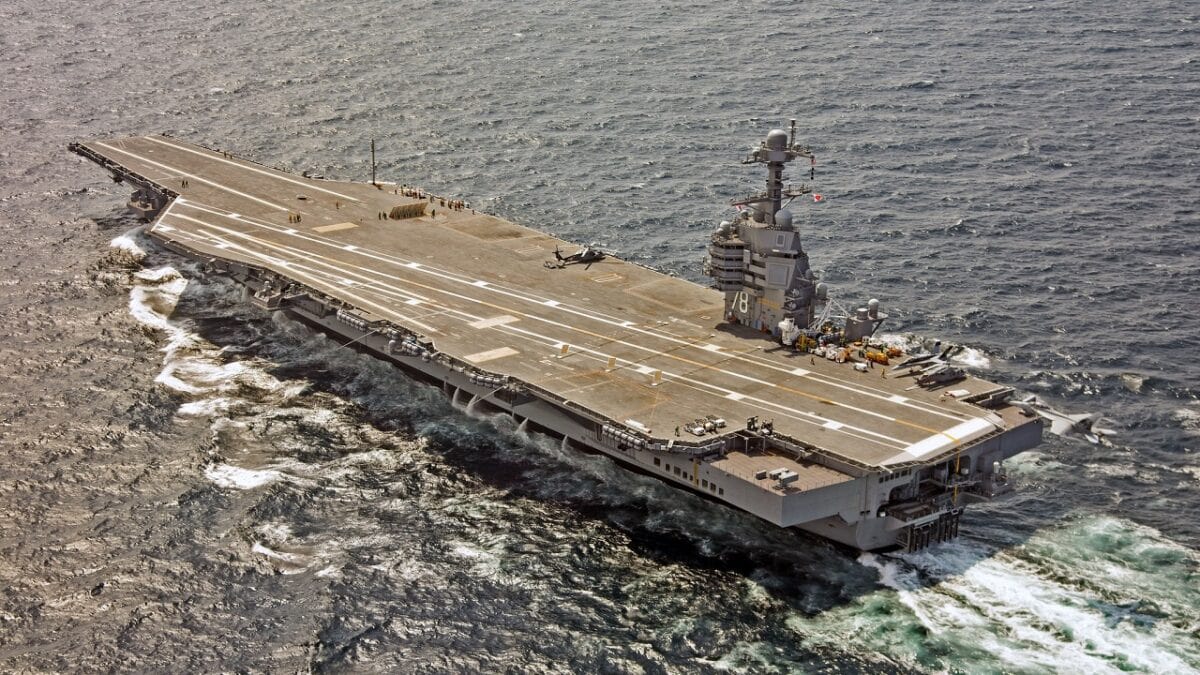
Ford-Class Aircraft Carrier Artist Rendering. Image Credit: Creative Commons.

Ford-class Aircraft Carrier. Image Credit: US Navy.
A Senior Editor for 19FortyFive, Peter Suciu is a Michigan-based writer who has contributed to more than four dozen magazines, newspapers and websites. He regularly writes about military hardware, firearms history, cybersecurity and international affairs. Peter is also a Contributing Writer for Forbes. You can follow him on Twitter: @PeterSuciu.

